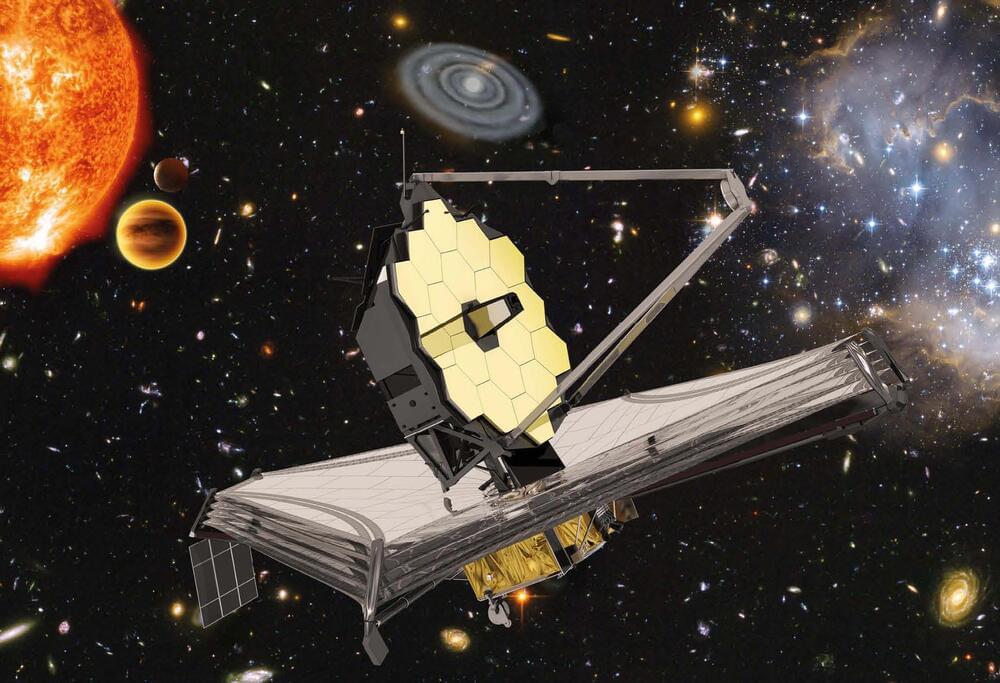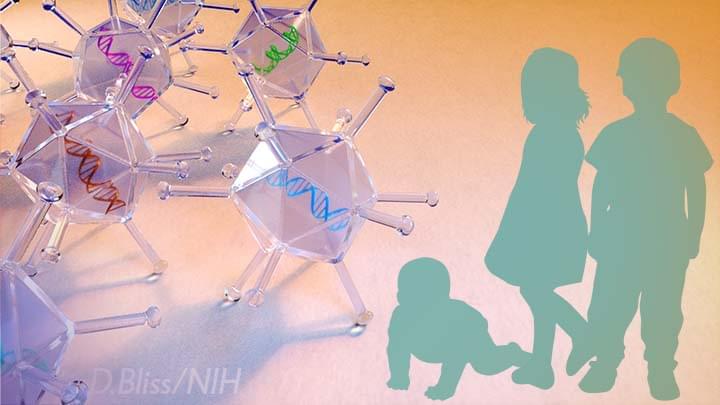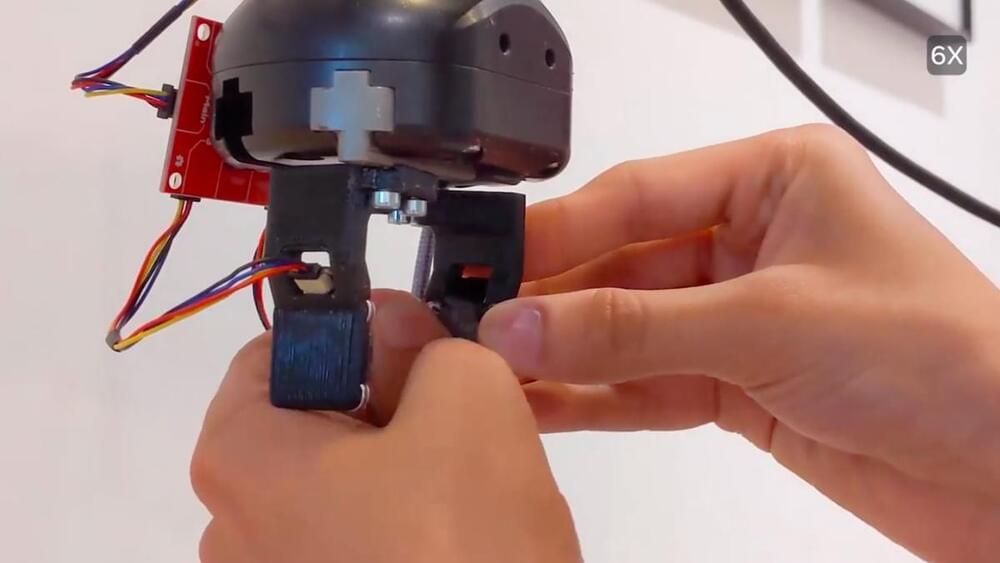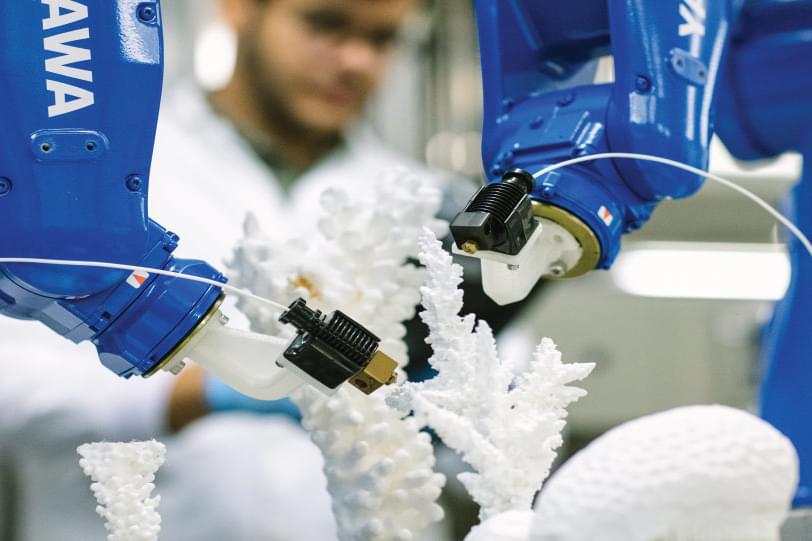An image supposedly showed a work of Day of the Dead sky art consisting of drones shaped like a sombrero-wearing skull.
Page 4713
Nov 2, 2021
James Webb Space Telescope: An Astronomer on the Team Explains the “First Light Machine”
Posted by Genevieve Klien in category: space
The James Webb Space Telescope is scheduled to head to space on December 18 2021. With it, astronomers hope to find the first galaxies to form in the universe, will search for Earthlike atmospheres around other planets and accomplish many other scientific goals.
I am an astronomer and the principal investigator for the Near Infrared Camera – or NIRCam for short – aboard the Webb telescope. I have participated in the development and testing for both my camera and the telescope as a whole.
To see deep into the universe, the telescope has a very large mirror and must be kept extremely cold. But getting a fragile piece of equipment like this to space is no simple task. There have been many challenges my colleagues and I have had to overcome to design, test and soon launch and align the most powerful space telescope ever built.
Nov 2, 2021
New blood test can spot more than 50 types of cancer — many hard to detect early
Posted by Genevieve Klien in category: biotech/medical
Nov 2, 2021
Partnership to Expand Effective Gene Therapies for Rare Diseases
Posted by Genevieve Klien in categories: biotech/medical, economics, finance, genetics
Rare diseases aren’t so rare. Collectively, up to 30 million Americans, many of them children, are born with one of the approximately 7,000 known rare diseases. Most of these millions of people also share a common genetic feature: their diseases are caused by an alteration in a single gene.
Many of these alterations could theoretically be targeted with therapies designed to correct or replace the faulty gene. But there have been significant obstacles in realizing this dream. The science of gene therapy has been making real progress, but pursuing promising approaches all the way to clinical trials and gaining approval from the U.S. Food and Drug Administration (FDA) is still very difficult. Another challenge is economic: for the rarest of these conditions (which is most of them), the market is so small that most companies have no financial incentive to pursue them.
To overcome these obstacles and provide hope for those with rare diseases, we need a new way of doing things. One way to do things differently—and more efficiently—is the recently launched Bespoke Gene Therapy Consortium (BGTC). It is a bold partnership of NIH, the FDA, 10 pharmaceutical companies, and several non-profit organizations [1]. Its aim: optimize the gene therapy development process and help fill the significant unmet medical needs of people with rare diseases.
Nov 2, 2021
What chip shortage? AMD books capacity years ahead to ease crunches
Posted by Genevieve Klien in categories: biotech/medical, computing, mobile phones
LISBON, Nov 2 (Reuters) — Chip designer Advanced Micro Devices (AMD.O) has been able to skirt most of the problems linked with the global chip supply shortage by forecasting demand years in advance, a top executive said on Tuesday.
Demand for electronics gadgets from people stuck in homes due to the pandemic has led to a shortage of semiconductors that are used from anything from mobile phones and cars.
But despite a squeeze in supply, AMD has been able to take market share away from rival Intel (INTC.O) in both PCs and servers with its latest line of processors.
Nov 2, 2021
NASA’s Juno probe reveals secrets of Jupiter’s atmosphere in 3D
Posted by Genevieve Klien in categories: climatology, space
We’ve got more information than ever on how the gas giant’s cyclones and water operate, deep in the atmosphere.
Nov 2, 2021
Mark Zuckerberg Wants Robots to Wear His Skin
Posted by Kelvin Dafiaghor in category: robotics/AI
Meta’s new tactile-sensing skin could allow robots to “feel” in a new way, which will somehow make the metaverse more life-like.
Nov 2, 2021
Does reality exist? | Anil Seth, Sabine Hossenfelder, Massimo Pigliucci & Anders Sandberg
Posted by Kelvin Dafiaghor in categories: computing, cosmology, Elon Musk, neuroscience, quantum physics, transhumanism

Sabine Hossenfelder, Anil Seth, Massimo Pigliucci & Anders Sandberg discuss whether humanity is stuck in the matrix.
If you enjoy this video check out more content on the mind, reality and reason from the world’s biggest speakers at https://iai.tv/debates-and-talks?channel=philosophy%3Amind-a…the-matrix.
Nov 2, 2021
Deep Reasoning: Is this the Next Era of AI?
Posted by Kelvin Dafiaghor in categories: information science, robotics/AI
Thanks to this new category of algorithms that has proved its power of mimicking human skills just by learning through examples. Deep learning is a technology representing the next era of machine learning. Algorithms used in machine learning are created by programmers and they hold the responsibility for learning through data. Decisions are made based on such data.
Some of the AI experts say, t here will a shift in AI trends. For instance, the late 1990s and early 2000s saw the rise of machine learning. Neural networks gained its popularity in the early 2010s, and growth in reinforcement came into light recently.
Well, these are just a couple of caveats we’re experienced throughout the past years.
Nov 2, 2021
3D-printed calcium carbonate coral skeletons could help restore reefs
Posted by Kelvin Dafiaghor in category: materials
Living coral reefs consist of rigid porous “skeletons” inhabited by the tiny coral polyps that built them. A new research project aims to restore damaged reefs faster than ever, utilizing 3D-printed skeletons made of the same material as the real thing.
First of all, there have been other projects that attempted to encourage the regrowth of coral by placing artificial skeletons on existing reefs. In most cases, though, those skeletons were made of materials such as concrete or polymers.
This means that waterborne coral polyps arriving at the reef have had to secrete calcium carbonate onto the structures, in order to “make them their own.” Given that some corals grow at a rate of just a few millimeters per year, it can take quite a long time to rebuild reefs in this fashion.

















